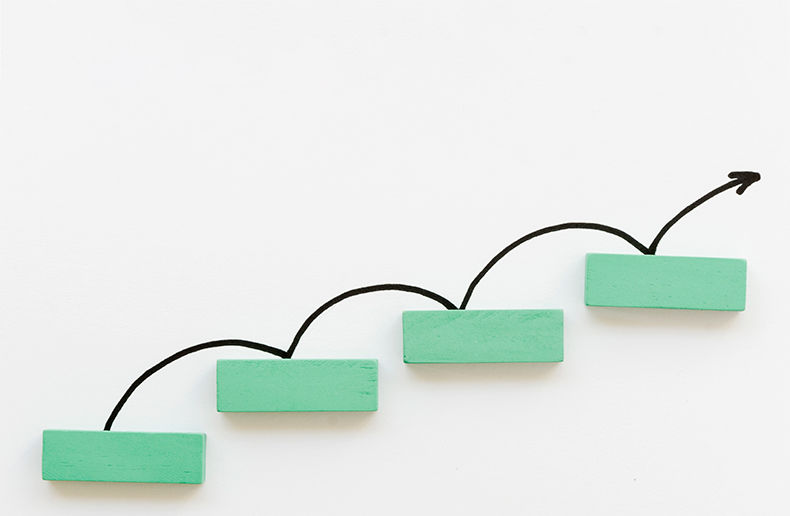Term insurance sales are on the rebound. The recession is driving potential clients to seek inexpensive insurance coverage, an ideal climate for term products, many observers confirm.
Key players in the term insurance sector are reporting an upturn in sales for all term products. They say that tough times are spurring the success of this product often sold at a discount as a door opener.
A predictor of new sales in the coming months, the MIB Group produces an index of monthly life insurance application activity in the United States and Canada. The index has been decreasing for the last few months.
In January, the number of applications submitted in Canada decreased by 6.5% compared with January 2008, the index reveals. In December 2008, the number applications were down 5.6% from the same month in 2007. The same scenario was seen in November, as the number of applications declined by 3.1% from the same month in 2007. The last positive figure was seen in September, with growth of 0.5% in the number of applications compared with September 2007.
The index also reports that the biggest decrease concerned potential insured ages 0 to 45, both in Canada and the United States.
If this downturn reflects the current recession, it seems that term insurance is dodging the bullet.
Compulife Software president Bob Barney makes a direct link between growth of term insurance sales in Canada and the recession.
For several years, Compulife has offered agents an online service that compares the prices of insurance products available in Canada and the U.S. During each recession, the company's software has detected heightened demand for term insurance comparisons. This fervour is happening again.
"Recessions bring [people] back to sound principles. People [take fewer] risks and are more careful than careless. They start to pay attention to the costs. They're asking questions: do I really need permanent life?" Mr. Barney explains.
Term insurance's boost is coming at the expense of permanent products, Mr. Barney notes. "Check for more lapses on whole life," he adds.
Saundra Edwards, assistant vice president, individual life insurance marketing and product development for all Great-West Life companies, mentions robust growth of annual premium sales in term insurance at Great-West, London Life and Canada Life. "We had a good increase in term sales over last year, more than 25% year to date until a couple of weeks ago," she said in an interview in early March. However, she did not confirm a migration from permanent products to term products.
Some clients are putting off buying permanent insurance until economic conditions improve, Ms. Edwards points out. "I think some customers may delay a permanent life purchase today with a term product, and convert later when the economic situation is better," she says.
Like MIB Group, Ms. Edwards observes a drop in life insurance applications submitted within her companies in recent months. This has not yet translated into results because sales remain up at the three companies for all products combined. "For applications results, there is usually a two to three-month delay from actual sales," Ms. Edwards points out.
She says she is confident that sales will remain steady in 2009 as life insurance sales are typically vigorous during volatile periods.
Ms. Edwards adds that the three companies combined will lead the Canadian term insurance market.
Manulife Financial and Transamerica Life Canada, other contenders in this market, have also seen their term insurance business gain a second wind.
Natasha Krivokapic, product manager, term insurance products sums up term insurance sales at Manulife as very satisfactory. She points out that Term 10 and Term 20, together with Term 100, to a lesser extent, are proving very popular in these troubled times. "Term is a great and reliable place," she says.
Ms. Krivokapic thinks that people are being more cautious than ever with their disposable income. They perceive term insurance as an economical product. On top of that, they get the flexibility of converting to a more enduring product thanks to that option included in term products.
The market is very competitive, Ms. Krivokapic adds. By her count, more than ten suppliers have cut their term insurance prices in the past year, including Manulife.
The Great-West companies also pared the price of all of its term products a year ago. "We re-priced to go back among the top three with our main competitors, Ms. Edwards explains.
Mr. Barney confirms that there is a race to reduce term rates, which had been stable for the last two years. "[In March] two companies will change their prices to be more competitive, and Transamerica is one of them," he says.
Compulife software shows that Transamerica's Term 10 currently costs $415 per year for a non-smoking male age 40 that buys $500,000 of coverage at the preferred rate.
This premium will drop to $385 after the discount Transamerica is poised to announce on March 16, Mr. Barney said.
Transamerica is doing more than slashing prices. In a message sent to all its independent advisors at the end of February, the insurer announced its intention to overhaul its product portfolio as of March 16. Notably, it is discarding its whole life product and withdrawing 20Plus and LifePlus cost of insurance options from one of its universal life products, EstateAdvantage (see p.3).
Only level cost (Term 100) and two annual renewable term cost options remain on the product.
Transamerica is keeping its term product line intact. The insurer calls term the core of its product offering, together with universal life. The agents' guide also underlines the drop in term prices.
When contacted by The Insurance Journal for an interview, Transamerica responded via e-mail. Joe Kordovi, vice president and pricing actuary, life products, wrote: "If 2002 is any indication, we expect to see large increases in term sales. That is why we have launched new more competitive Term 10 and Term 20 rates. We anticipate that with our new very competitive rates, our term sales will increase substantially."
There is some migration to term, Mr. Kordovi points out. "However, in the last market downturn we saw that the number of UL policies sold held strong while the amount of investment dollars shrunk. UL is flexible that way, that is, your payments can be flexible. We also expect that UL face amounts may partially be replaced with less expensive term riders within the same policy," he wrote.
Shooting star
Despite the dynamism of term insurance, Ms. Edwards of Great-West does not expect this business segment to supplant permanent insurance sustainably.
Because of the aging population, permanent products such as whole life and universal life will see the strongest growth over the long term, she says.
Ms. Edwards predicts a rising need for asset transfers and wealth protection. Most of the permanent product sales that result will be new issues, but some will come from conversion of term products. "People will convert their term policies into permanent coverage, say in the next 10 to 15 years," she continues.
According to Munich Re's 2008 Individual Insurance Survey, 11% of UL new business premiums arise from Term conversions.
For now, Term 10 is leading the pack in term insurance sales. This product is not the only one being buoyed by current economic conditions. "Term 20 is increasingly popular in Canada," Mr. Barney, of Compulife, points out.
"Term 10 is still our best seller in our term products, even if we see Term 20 increasing its share, fuelled by the need for loan and mortgage coverage," Ms. Edwards of Great-West explains. She adds that Term 20 is being boosted by a growing need to insure loans and mortgages.
The possibility of converting Term 10 into Term 20 without a medical examination or other proof of health in the first five years of the contract is also spurring sales of 20 year term at insurers such as the Great-West group and Manulife.
For its part, Transamerica has stepped up sales of its Term 30 product launched a little over a year ago. The product, which accounted for 2.5% of the insurer's total term sales as at Feb. 20, 2008, climbed to 5% by early March 2009, Mr. Kordovi explained in his email.
This trend has been stoked by the recession. "The current economy is driving buyers to the least costly products in the short-term, Term 10 and Term 20," he says.













